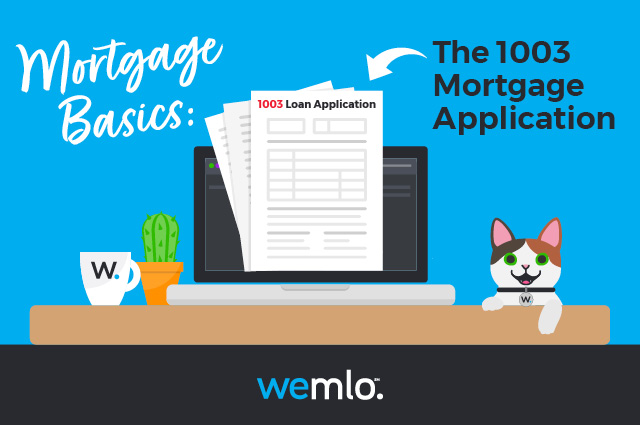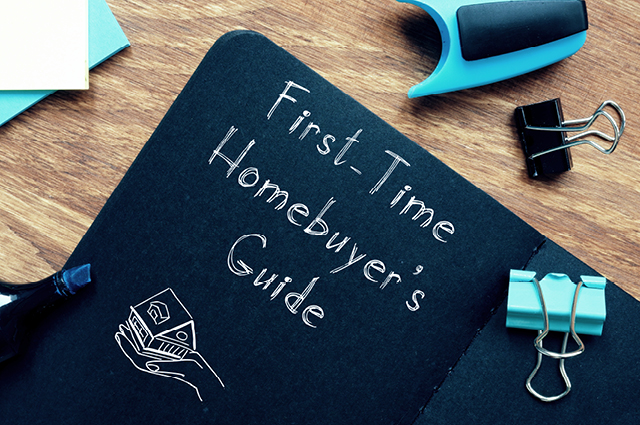Discover how the latest technology revolution could change the mortgage industry.
Helping Clients Understand The 1003 Mortgage Application
Obtaining a mortgage loan is no easy feat! Between divulging personal and financial information, coming face-to-face with debts and credit scores, and signing document after document, it is easy to understand how clients can feel overwhelmed by the process. Add forms with seemingly random numbers in the name, like the 1003 mortgage application, and they may just head for the hills.
Ensuring clients understand exactly what they’re signing can promote confidence, autonomy, and knowledge building. It can also ease anxieties and fear.
We’ve gathered some simple information on the 1003 mortgage application, so you can help ensure even the most hesitant borrowers understand. Before your next client meeting, refresh yourself on the cliffs notes below, or copy, paste, and send directly to their email inbox! Either way, they’re sure to appreciate your beginner-friendly explanation.
Here are the basics you’ll want to cover:
What is the 1003 Mortgage Application?
The 1003 mortgage application, also known as the Uniform Residential Loan Application (URLA) or, simply, form 1003, is a standardized document used by mortgage professionals across the nation. The form was initially developed by the Federal National Mortgage Association, or Fannie Mae, to document mortgage transactions. Today, it is required by Fannie Mae for any home loan that they purchase from a lender.
The current version has nine distinct sections and seeks information on borrowers’ income, credit, assets, and more. It is typically filled out at the start of a mortgage application process, and then again at closing.
It’s important to note that the name applies specifically to Fannie Mae loans. There are comparable similar forms for other loan programs, like form 65 from the Federal Home Loan Mortgage Corporation, or Freddie Mac, and some mortgage professionals may even accept financial information from borrowers in other ways. Loan seekers should always check in with their professional for specifics, but there’s a good chance many will see the 1003 mortgage application when they begin the home financing process. To streamline the mortgage loan process, borrowers typically don’t fill out the “official” 1003 directly anymore. Instead, borrowers will fill out an online step-by-step application and when they sign their documents, the information will be populated on the 1003 form.
What is the purpose of the 1003 Mortgage Application?
The 1003 mortgage application is designed to provide valuable information on a borrower’s financial situation to lenders. mortgage professionals use this document to determine risk, creditworthiness, and more, allowing for more informed lending decisions. Essentially, it sums up the borrower’s financial situation for the mortgage professional to analyze.
What information do borrowers need for the 1003 Mortgage Application?
Completing form 1003 can be time-consuming, so it’s important that borrowers know what they will need to provide ahead of time. Loan seekers should plan to report:
-
General borrower information. This might include income, place of work, and personal information.
-
Financial information. Borrowers will be asked to list details of their investments, savings, and debts.
-
Property information. Here, they will describe the property that they would like to purchase or refinance.
-
Loan applicants should detail how they plan to pay for the transaction and other relevant financial data.
-
Acknowledgements and agreements. Clients must carefully review the provided information before signing.
-
Military service. They should explain any relevant service.
-
Borrowers can choose whether to answer some general questions about their identity. If the loan application is taken in person, the mortgage professional will be required to make a best guess answering the demographics questions if the consumer elects not to answer them.
Borrowers should keep in mind that the loan originator information section should be left blank, as it must be filled out by their mortgage professional.
The 1003 Mortgage Application
Successfully applying for a mortgage loan is no easy feat, and applicants can become easily intimidated by confusing language, requests for financial information, and signing document after document. Ensuring clients understand key terms, like the 1003 mortgage application, helps make the process that much smoother.
Get educated on the latest mortgage news tips and updates with the wemlo Weekly. Sign up for wemlo’s newsletter that has with everything you need to know, all in one place!



